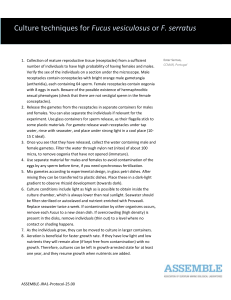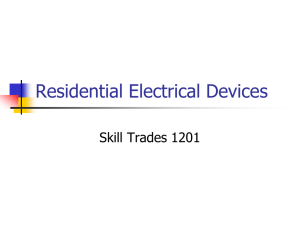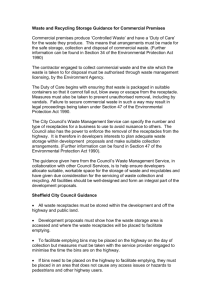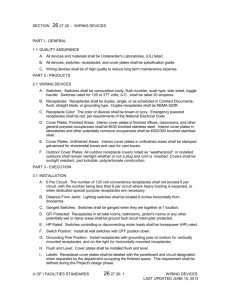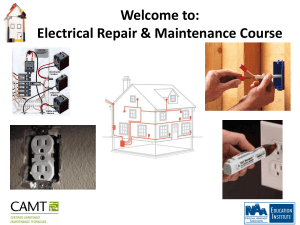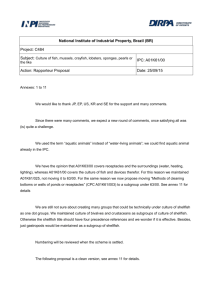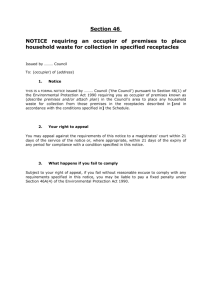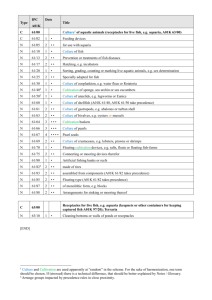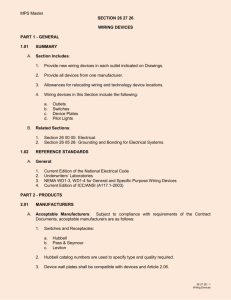un/scetdg/48/inf.31
advertisement
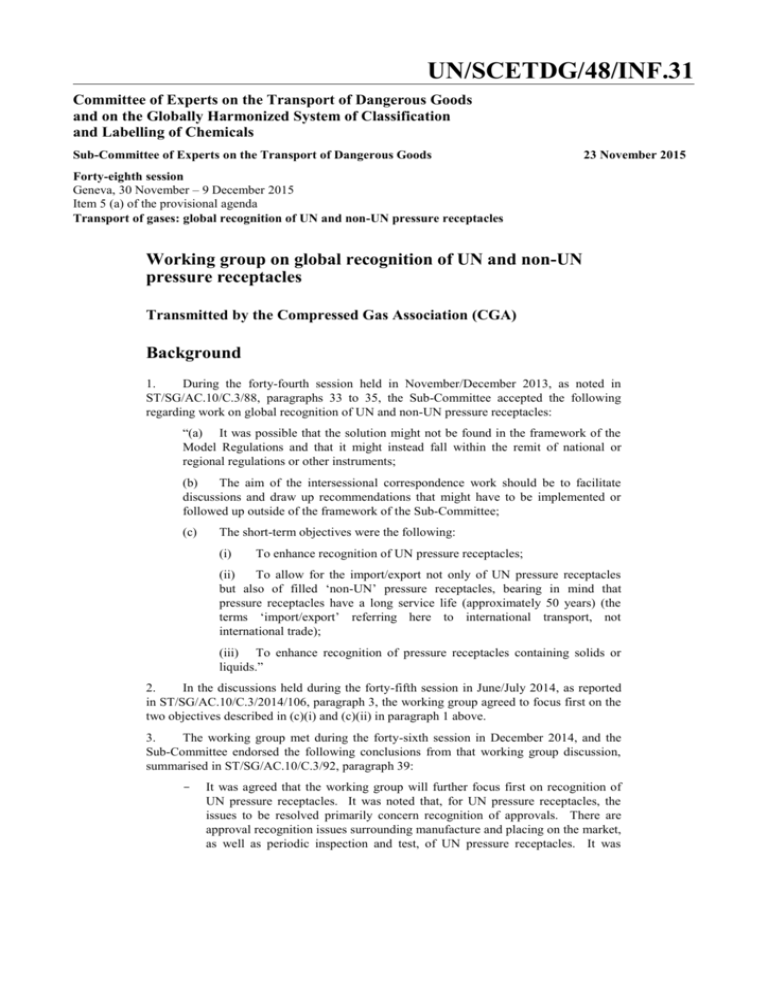
UN/SCETDG/48/INF.31 Committee of Experts on the Transport of Dangerous Goods and on the Globally Harmonized System of Classification and Labelling of Chemicals Sub-Committee of Experts on the Transport of Dangerous Goods 23 November 2015 Forty-eighth session Geneva, 30 November – 9 December 2015 Item 5 (a) of the provisional agenda Transport of gases: global recognition of UN and non-UN pressure receptacles Working group on global recognition of UN and non-UN pressure receptacles Transmitted by the Compressed Gas Association (CGA) Background 1. During the forty-fourth session held in November/December 2013, as noted in ST/SG/AC.10/C.3/88, paragraphs 33 to 35, the Sub-Committee accepted the following regarding work on global recognition of UN and non-UN pressure receptacles: “(a) It was possible that the solution might not be found in the framework of the Model Regulations and that it might instead fall within the remit of national or regional regulations or other instruments; (b) The aim of the intersessional correspondence work should be to facilitate discussions and draw up recommendations that might have to be implemented or followed up outside of the framework of the Sub-Committee; (c) The short-term objectives were the following: (i) To enhance recognition of UN pressure receptacles; (ii) To allow for the import/export not only of UN pressure receptacles but also of filled ‘non-UN’ pressure receptacles, bearing in mind that pressure receptacles have a long service life (approximately 50 years) (the terms ‘import/export’ referring here to international transport, not international trade); (iii) To enhance recognition of pressure receptacles containing solids or liquids.” 2. In the discussions held during the forty-fifth session in June/July 2014, as reported in ST/SG/AC.10/C.3/2014/106, paragraph 3, the working group agreed to focus first on the two objectives described in (c)(i) and (c)(ii) in paragraph 1 above. 3. The working group met during the forty-sixth session in December 2014, and the Sub-Committee endorsed the following conclusions from that working group discussion, summarised in ST/SG/AC.10/C.3/92, paragraph 39: - It was agreed that the working group will further focus first on recognition of UN pressure receptacles. It was noted that, for UN pressure receptacles, the issues to be resolved primarily concern recognition of approvals. There are approval recognition issues surrounding manufacture and placing on the market, as well as periodic inspection and test, of UN pressure receptacles. It was UN/SCETDG/48/INF.31 agreed first to address recognition of approvals for manufacture including placing on the market. - Currently, there is recognition of manufacturing approvals for UN pressure receptacles at the regional level, for instance between the United States of America and Canada or between European countries. It was recognised that additional regional agreements might be necessary to further recognition. Update 4. The working group met during a lunchtime session during the forty-seventh session in June 2015, and the following (as summarised in paragraphs 5 to 8 below) was then reported orally to the Sub-Committee. 5. The following action items had been completed, related to recognition of approvals for manufacture including placing on the market of UN pressure receptacles: - The representative from CGA had provided information to the working group, on the approval processes/systems for manufacture of UN pressure receptacles in the United States of America and in Canada, including references to the specific sections of the applicable regulatory instruments. - Although the former expert from Belgium was no longer chair of the Transportable Pressure Equipment Directive Administrative Cooperation group (TPED ADCO), he had fully briefed the vice chair regarding the issues to be considered by European Union member states, and it was anticipated that discussion would take place at the next TPED ADCO meeting in September 2015. 6. The following action items, related to recognition of approvals for manufacture including placing on the market of UN pressure receptacles, remained on-going: (a) The representative from EIGA will provide detailed information on the approval process/system for manufacture of UN pressure receptacles in Europe, including references to the specific sections of the applicable regulatory instruments. (b) The experts from European Union member states will initiate a process to engage TPED ADCO to explore possible future cooperation for the mutual recognition of UN pressure receptacles, for example with the United States of America and Canada. (c) The expert from the United States of America will explore the possibility of amending Title 49 of the Code of Federal Regulations (49 CFR) to provide for further mutual recognition of manufacturing approvals for UN pressure receptacles with other countries such as European Union member states. The expert from Canada will do the same in respect of that country’s Transportation of Dangerous Goods Regulations. 7. It was also noted that, due to the upcoming expiry on 1 June 2016 of Multilateral Agreement M237 under the European ADR, there was some drive to address import and export provisions for non-UN cylinders between Europe and the United States of America. The expert from the United States of America discussed the possibility of provisions in 49 CFR to address import of filled pi-marked European cylinders, if reciprocal provisions may be considered in European regulatory instruments to address import of filled DOT cylinders. It was noted that U.S. and Canadian regulations currently provide for the filling and transport of foreign cylinders for export, and it was requested that the possibility of 2 UN/SCETDG/48/INF.31 similar provisions in European regulatory instruments be considered for filling and transport of foreign cylinders, such as DOT cylinders, for export. 8. U.S. and European competent authorities on the working group agreed to identify specific sections of their respective regulatory instruments that would need to be addressed to provide for import and export of filled non-UN cylinders, i.e. import of filled pi-marked European cylinders in the U.S., and import and export of filled DOT cylinders in Europe. Proposal 9. It is proposed that the working group meet during a lunchtime session during the first week of this forty-eighth session (30 November - 4 December 2015), to discuss the status of the action items described in paragraphs 6 and 8 above, to discuss any developments, and to agree on further next steps. 3
